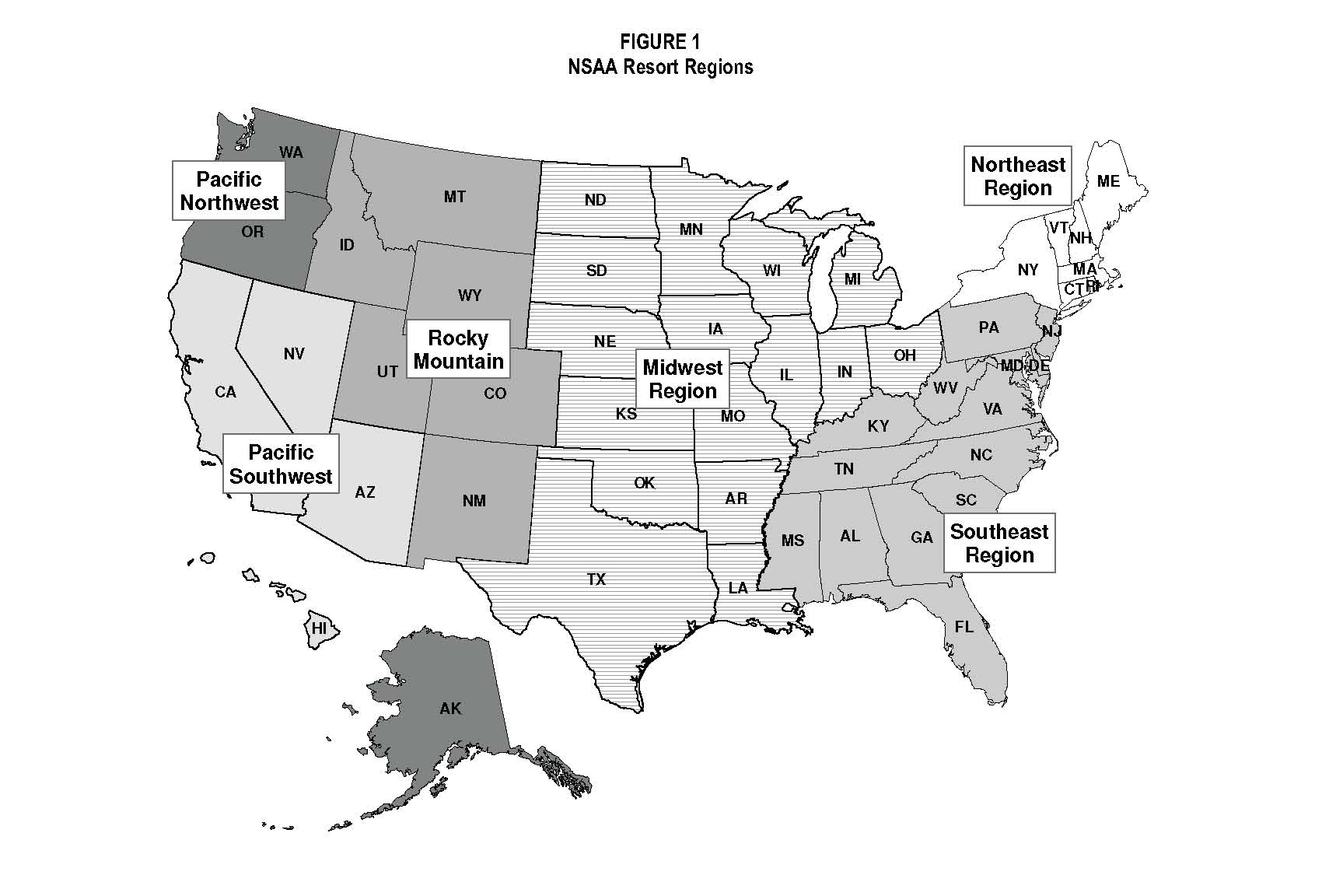
Numbers are powerful tools that can be utilized by every company and business throughout the world to project revenue, costs, and budgets. Taking raw data and being able to analyze those numbers is vital for any business to survive and be successful in the future. There have been many businesses that have failed to correctly analyze numbers in the past and they are no longer in business today.
The U.S. ski industry is very competitive and complex and these numbers are sure to be analyzed by every ski resort in the country. Ski areas have invested millions of dollars over the last few years in resort upgrades, terrain expansion, and overall guest experiences. With that amount of money being invested, ski resorts are scrutinizing numbers throughout the industry to make sure their business plans are on point.
The ski industry is just like any other business in that regard and the National Ski Areas Association (NSAA) keeps data on the number of skier visits each year in the United States. Those numbers have been recorded since the 1978/79 season and are broken down into six categories representing sub-regions throughout the United States. Those regions are the Northeast, Southeast, Midwest, Rocky Mountains, Pacific Southwest, and Pacific Northwest. The NSAA has also ranked each season by which one saw the most visits and which one saw the fewest.
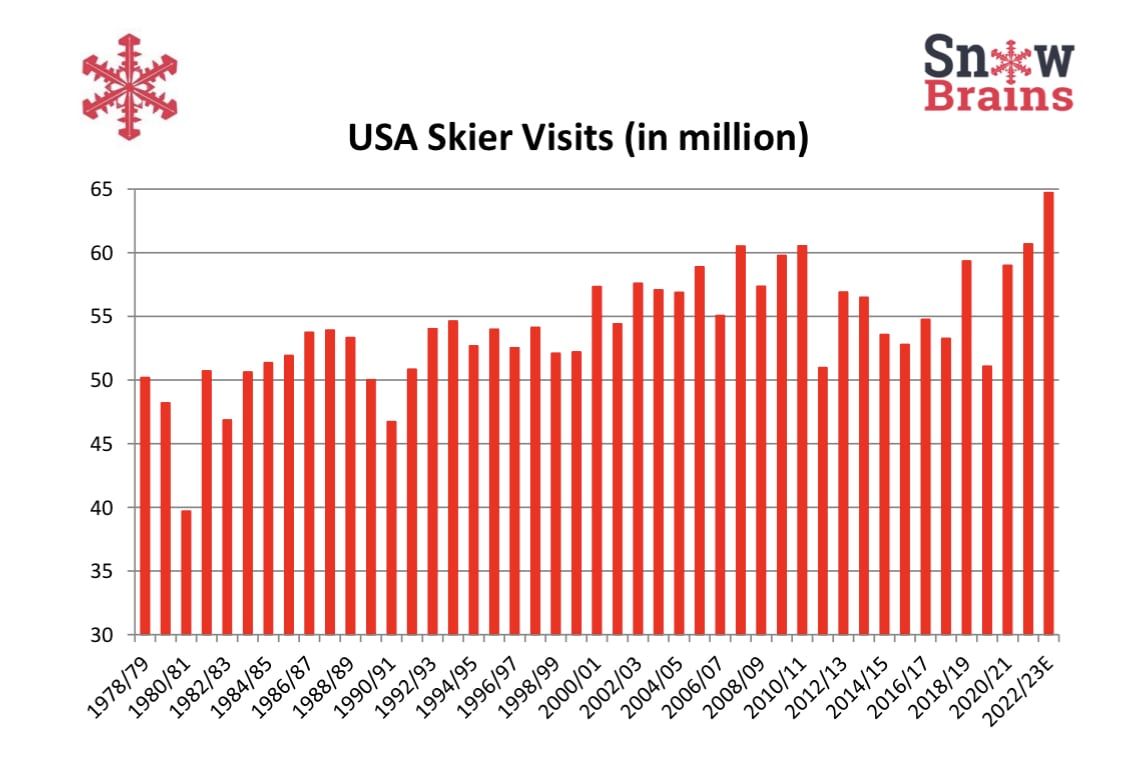
Skier visits in the United States have increased since the Pandemic and have seen the two highest skier visits since records started being kept. Last year saw the most skier visits in history with 65.4 million people hitting the slopes across the country. This is a great indication that the ski industry is strong and growing. Breaking down the numbers and taking a look at how it directly affects the ski industry is key to forecasting the future. The three main data points were the number of skier visits, the breakdown of ski resorts in specific geographical regions in the NSAA 2022/23 report, and the population of those regions according to the U.S. Census Bureau’s 2020 report. Utilizing those three tools correctly gives a great perspective on what direction the ski industry is headed.
The 2022/23 season saw 5 million more skier visits than the 2021/22 season and ranked second all-time on the list according to the NSAA report. The Rocky Mountain Region recorded the highest overall number of visits with 28.2 million visits out of the 65.4 million total visits. The Rockies are also the region that has remained the top region for skier visits since records began during the 1978/79 season. It is also the region that has seen the largest growth with 12.3 more skier visits since the 1978/79 season. The Pacific Northwest Region recorded its highest number of skier visits of all time with 4.6 million visits. The Southeast Region recorded the lowest amount of skiers by region last season with a total of 4.3 million visits.
The top 10 highest recorded skier visits have all occurred since the 2002/03 season when 57.6 million skiers visited the mountains that year, ranking that season at #9. Since the 2002/03 season skier visits in the United States have increased by 6.5 million people.
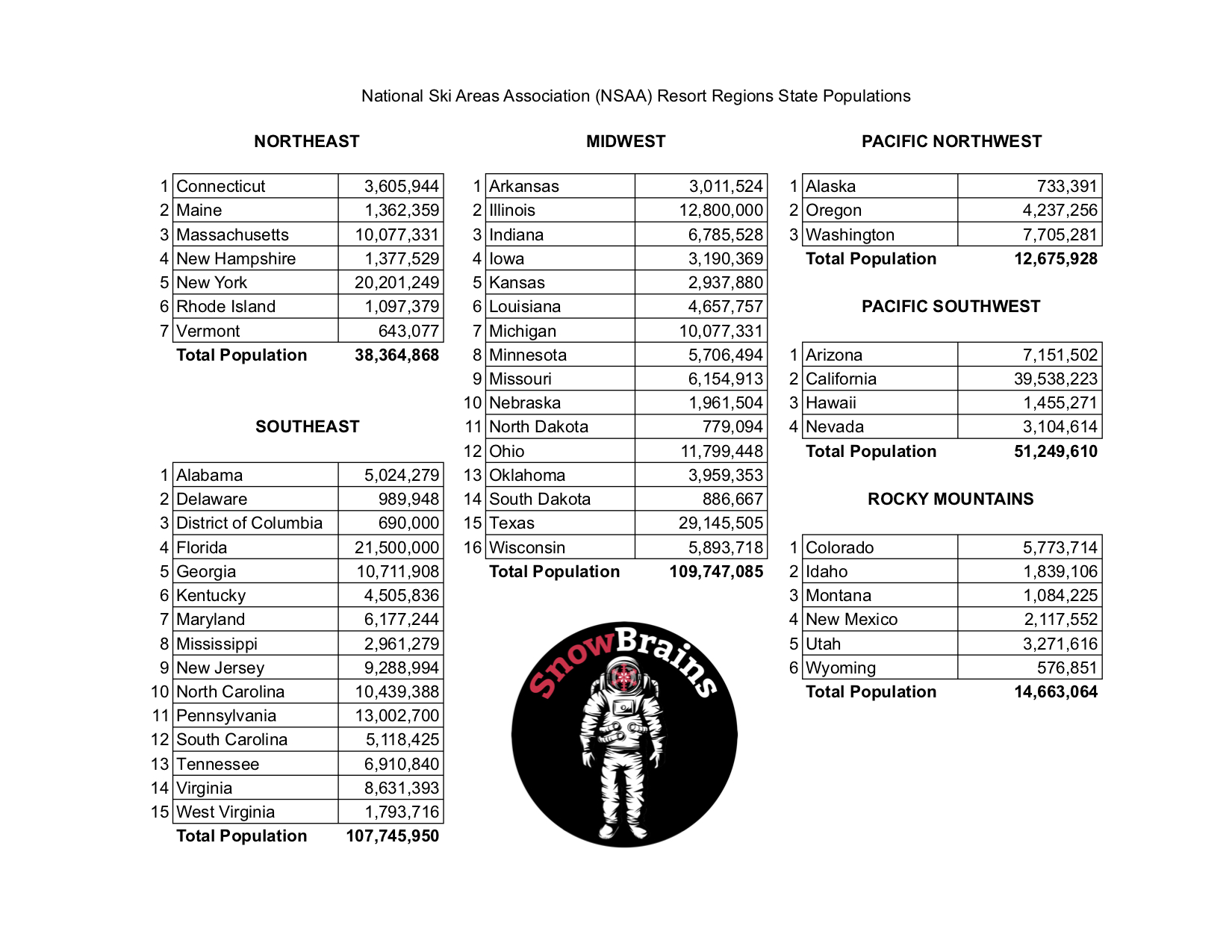
The 2020 U.S. Census Bureau released each state’s population numbers which is another piece of data that could be utilized to analyze numbers within the ski industry. It is important to note that the chart above is broken down by regions according to the NSAA Resort Regions and not by the regions determined by the U.S. Census Bureau. For example, the states of Pennsylvania and New Jersey are in the Southeast Region according to the NSAA and not in the Northeast Region where they are located according to the U.S. Census Bureau. It was important to follow the NSAA regions to get a clear perspective when analyzing skier participation numbers and comparing the correct regional populations.
The Midwest Region has 16 states and is the most populated region with 109.7 million people according to the 2020 U.S. Census Bureau numbers. However, it ranks fifth out of seven on the list of regions with the highest number of skier visits last season with only 6.5 million skier visits. Although ranking second highest with 15 states and the second most populated region with 107.7 million people, the Southeast Region ranked last with 4.3 million skier visits last season. It is important to note that these two regions do have states located in areas of the U.S. that receive little to no snow and some do not have any ski resorts at all.
Comparing the number of skier visits to a region’s total population of people is fair and these three regions do not follow the norm. The Rocky Mountain Region has a total of six states and a population of 14.7 million people and ranked number one for skier visits with 28.2 million. The Pacific Northwest Region saw 4.6 million skier visits last season but only has a total population of 12.7 million people. Those two regions are home to many big-time resorts that would qualify as destination spots and attract many skiers from not only the U.S. but from around the world. The Pacific Southwest Region is home to great ski country located in California and Nevada and accounts for 51.2 million people, however, it only attracted 8.5 million skier visits in 2022/23.
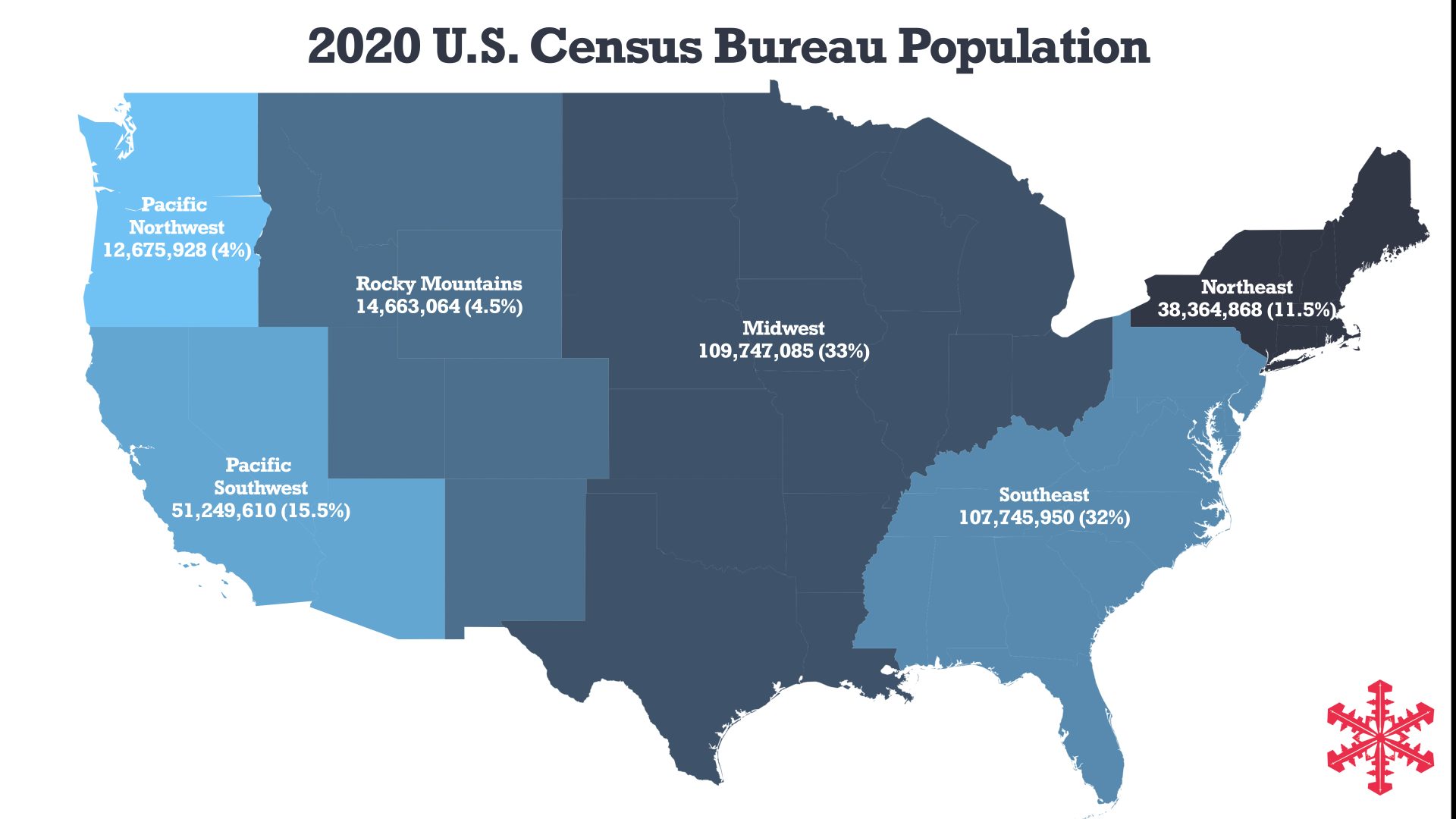
Breaking down the number of ski resorts by each NSAA Region gives a little more detail and depth to analyze the dynamics of the ski industry. The Northeast Region has the most ski resorts (145 to be exact) and has the second highest number of skier visits with 13.2 million. It is also the fourth largest by total population with 38.4 million people compared to the other six regions. The Rocky Mountain Region is ranked second when it comes to ski resorts, with a total number of 100, according to the NSAA. It also accounted for the most skier visits of last season with 28.2 million. The Pacific Northwest Region is the least populated with 12.7 million people, the least amount of ski resorts with only 35, and ranks five out of six with the total number of skier visits at 4.6 million last season. Although the Midwest region has the second highest number of ski resorts with 115 and is the most populated with 109.7 million people, it ranks only fourth in skier visits with 6.5 million during the 2022/23 winter.
Overall, the numbers for skier visits have been relatively consistent in the Northeast, Midwest, and Southeast Regions over the last 44 years. The Southeast and Pacific Northwest Regions saw the least amount of skier visits last season with neither getting more than 4.6 million visits. The Rocky Mountain Region had the most growth over any other region since the 1978/79 season when it first had 15.8 million visits, which eventually grew to 28.2 million visits last season. Although the 1978/79 number is the lowest for the Rockies, it still ranks higher than any other region’s highest skier participation rate on record.
The U.S. population is still expected to grow by 79 million people by 2060, crossing the 400-million threshold in 2058 according to the U.S. Census Bureau. This contradicts projections that other developed countries’ populations will barely increase or even contract over the next few decades. Those population projections are a great sign for the U.S. ski industry that hopefully a lot of them will someday become active participants in snow sports activities. The ski industry has already started investing billions of dollars in infrastructure, lift upgrades, lodges, and terrain expansion to resorts around the country due to the strong participation numbers over the last few years. The future of the ski industry in the U.S. looks strong and the numbers do not lie.
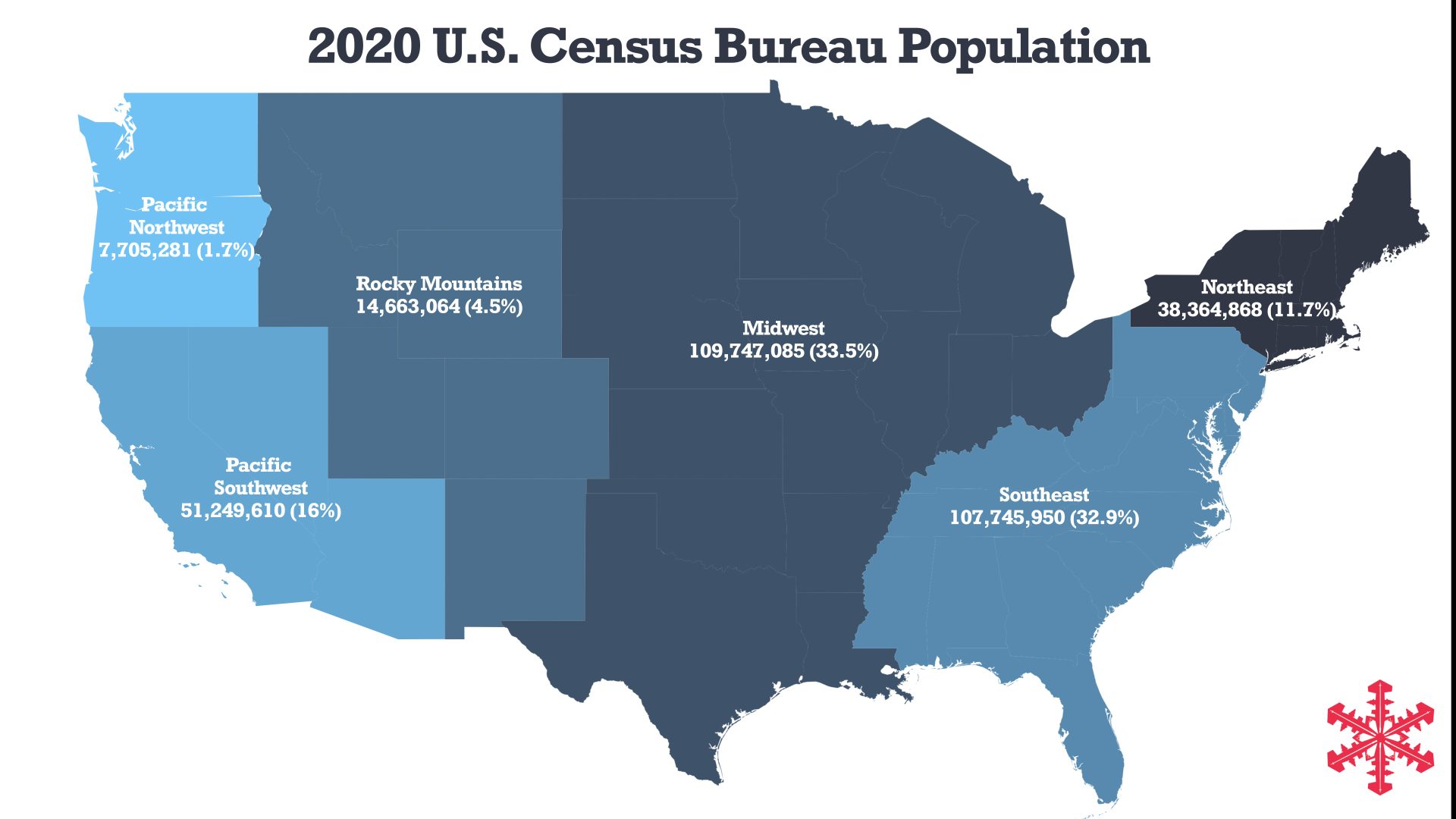
One thought on “Analyzing Growth in the Number of Skier Visits in The United States Over the Last 44 Years”